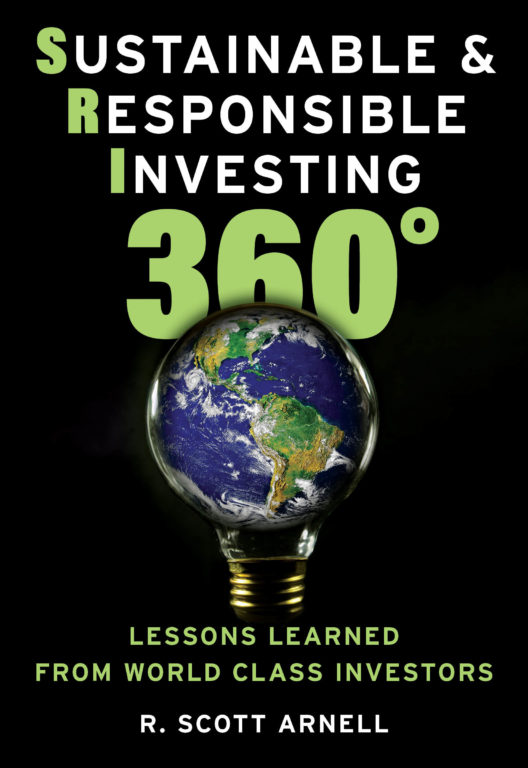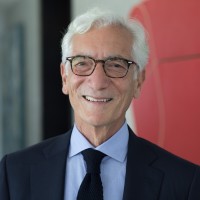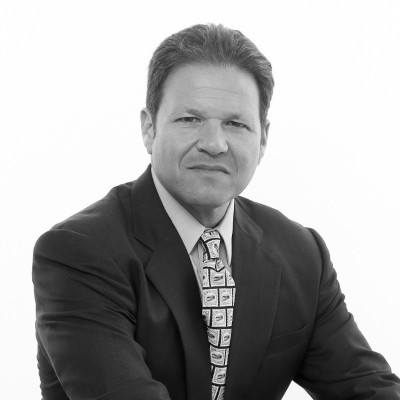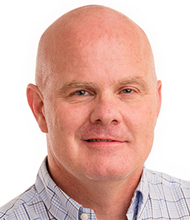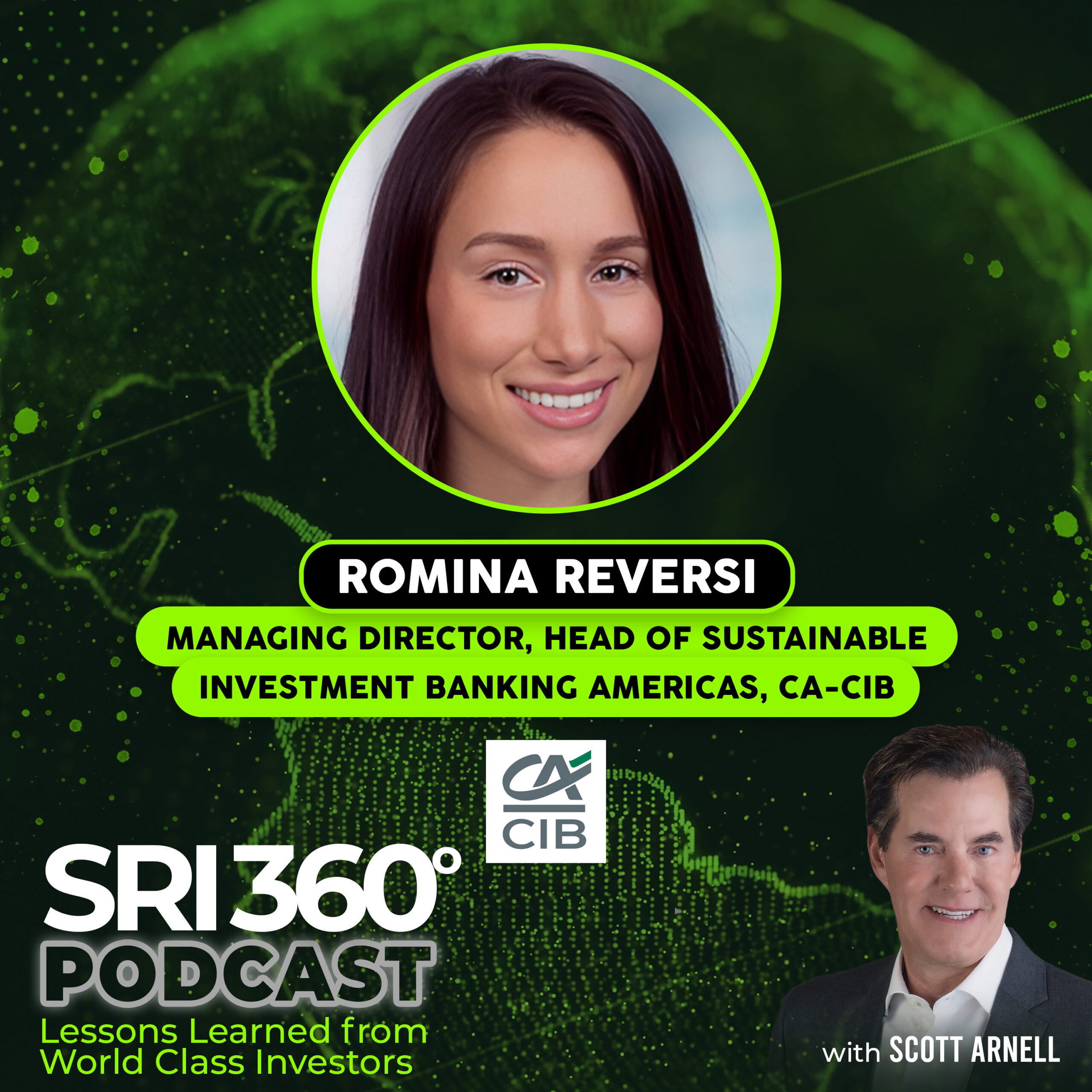
“I think it’s time for the market to rethink what is considered green – and what isn’t – outside the traditional lens we’ve used for the last decade. I’m not saying yes or no to any one case, but now is the time to ask new questions and explore how we can unlock more capital for these products. ”
— Romina Reversi
My guest today is Romina Reversi, Managing Director and Head of Sustainable Investment Banking Americas at Crédit Agricole CIB — one of the banks that helped write the very rules of the green bond market, and has stayed near the center of gravity ever since.
She was born in New York City, raised in its suburbs, and spent her summers between Italy and Argentina. That time abroad wasn’t just about family visits. They were early lessons in seeing the world through multiple lenses.
Different cultures. Different economic systems. Different assumptions about how the world works. Even as a kid, Romina was absorbing more than she realized — a habit of looking closely, asking questions, and noticing the gaps between places.
It was a foundation that would eventually shape a global career in sustainable finance — though that wasn’t the plan at the time. What drew her first wasn’t a cause. It was math. Not because of a grand plan, but because math made sense.
She enrolled at the University of Michigan, drawn to the strength of the Ross School of Business and the chance to leave the East Coast bubble. While there, she sought out discomfort — studying abroad in China, Hong Kong, and Spain.
But she took an unorthodox route for an investment banker: no MBA, no detour. Just straight into the deep end — JP Morgan’s derivatives desk. She worked in equity structuring and sales, building a technical foundation and a strong client ethic. As she puts it: “All bankers know the product. But how do you actually serve your clients? That’s the real work.”
The pivot came in 2015. Romina took what she describes as a ‘leap of faith.’
She moved from derivatives into a new and mostly uncharted part of the bank: ESG debt capital markets. Back then, most CFOs and treasurers hadn’t heard of green bonds. Frameworks barely existed. She and a few others were flying around the world with a handful of PowerPoint slides, trying to explain what this market even was.
In her own words, “There was no playbook. We were literally inventing how to pitch.”
That blank page became her blueprint. Over the next several years, she helped structure more than 500 sustainable debt transactions — including Apple’s first green bond and Uruguay’s step-up, step-down sustainability-linked bond, the first of its kind in the world.
Romina joined Crédit Agricole in 2021. It’s a bank with deep roots in agriculture and a reputation as one of the earliest movers in green and sustainable finance. And today, she’s building out their Americas operation with the same mix of ambition, nuance, and rigor that brought her success at JP Morgan.
For Romina and her bank, sustainability is more than branding — it’s ‘truly ingrained in their DNA.’
Now leading the Americas team, Romina operates across the entire investment banking suite — bonds, loans, M&A, IPOs, ESG advisory, and beyond.
Her mandate isn’t just to sell green products. It’s to embed sustainable thinking across structures. To know when a KPI isn’t credible. To tell a client when the deal they want to do isn’t in their best interest.
Romina is thoughtful about risk. Transparent about pushback. And unafraid to challenge linear definitions of impact. For her, transparency itself — giving investors a clear view into where their capital is going — is a form of additionality.
In a market still grappling with backlash, confusion, and greenwashing fatigue, Romina is defining what credible, innovative, and client-aligned sustainable finance can look like.
In this conversation, we talked about using AI for biodiversity tracking, about injecting sustainability into private credit, about financing for nuclear and hydrogen and sustainable aviation fuel, and much, much more…
Tune in and find out what it means to be a sustainable banker for the next decade — not just a dealmaker, but a translator, a teacher, and a strategist.
Listen to the episode on Apple Podcasts, Spotify, Overcast, Podcast Addict, Pocket Casts, Castbox, YouTube Music, Amazon Music, or on your favorite podcast platform. You can watch the interview on YouTube here.
What was your favorite quote or lesson from this episode? Please let me know in the comments.
SCROLL BELOW FOR LINKS AND SHOW NOTES…
ADDITIONAL RESOURCES:
SHOW NOTES:
[00:00] Introduction
[01:30] Romina’s multicultural upbringing shaped her global mindset
[03:39] Studying finance and business at Michigan, China, Hong Kong, and Spain
[06:26] Skipping the MBA to build a sustainable finance career
[08:27] Romina’s career at JP Morgan
[13:28] What sustainable finance looked like back in 2015
[17:01] Green social sustainability bonds explained
[18:45] Leaving JP Morgan to build a mission-aligned team at Crédit Agricole
[32:11] What today’s sustainable finance product suite looks like
[41:07] Introducing the world’s first step-up/step-down sustainability-linked bond in Uruguay
[45:30] Innovating sustainable finance frameworks as the market matures
[52:28] Including nuclear in Crédit Agricole’s green bond framework
[58:03] Understanding the biggest risks in ESG finance and how to mitigate them
[01:06:08] Exploring high-risk, high-impact frontier sectors
[01:09:44] Future of sustainable finance
[01:15:58] Rapid-fire questions
MORE ROMINA REVERSI QUOTES FROM THE INTERVIEW:
“We were one of the first banks to advocate for nuclear as green, even when it was excluded from early green bond frameworks. Years later, we helped structure the first U.S. corporate nuclear green bond and supported its inclusion in the EU taxonomy. The sentiment around nuclear has shifted dramatically – and I think that will continue. ”
— Romina Reversi
“Over the past five years, we’re seeing fewer inaugural issuers come to market and more repeat ones. These deals are sticky – once issuers start, they keep coming back. That’s why we spend a lot of time innovating the frameworks and approaches of those who have already done them. ”
— Romina Reversi



